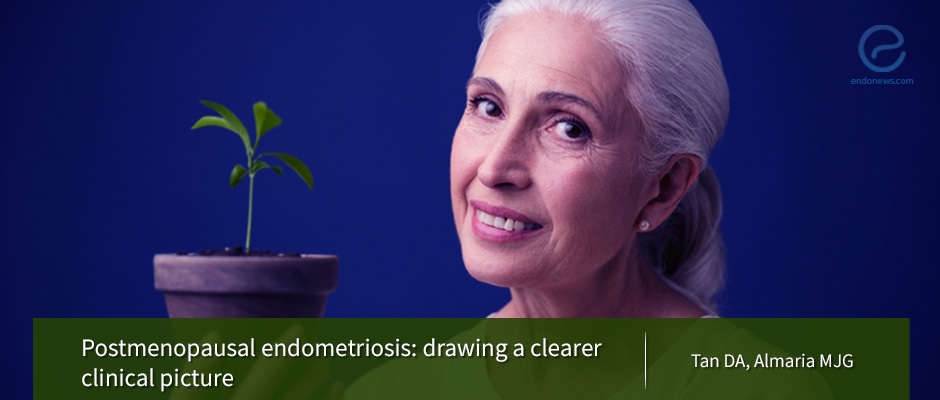A clearer picture of "endometriosis after menopause"
Jun 6, 2018
An infrequent disease which occurs in a state of ovarian estrogen deficiency and is more likely to undergo malignant change: Postmenopausal endometriosis
Key Points
Highlights:
- Endometriosis after menopause is often a recurrence of the premenopausal disease.
- Women with endometriosis may have a higher risk of malignant change after menopause and surgery is recommended as the first choice of treatment.
- There is a need for further researches to determine the optimal management of postmenopausal endometriosis and the actual risk of menopausal hormone therapy in malignant transformation of endometriosis.
What's done here:
- This review article evaluates the pathogenesis, risk factors, and management of postmenopausal endometriosis based on analysis of the data.
Data:
- Endometriosis is infrequent after menopause.
- Postmenopausal endometriosis occurs in a state of ovarian estrogen deficiency.
- Women with postmenopausal endometriosis may have a higher risk of malignant transformation and other forms of cancer unrelated to endometriosis.
- There is a tendency of postmenopausal endometriosis to spread and involve extragonadal organs such as ureters, intestines, bladder, and vagina which may cause constrictive and/or obstructive lesions.
- Menopausal hormone therapy may increase the risk of disease and/or pain recurrence and especially the risk of malignant change but a definite association between them has not been established.
Limitations:
- The available data on postmenopausal endometriosis is still inadequate for generalization.
Lay Summary
Delfin Avendano Tan and Marie Josephine Guanlao Almeria are obstetrician-gynecologists from the Philippines. They recently published a review article titled "Postmenopausal endometriosis: drawing a clearer picture". In this paper, the authors discussed the pathogenesis, risk factors, and management of postmenopausal endometriosis.
Women rarely have endometriosis after menopause (<3%). It is probably due to the persistence or recurrence of the premenopausal disease. New development or rising of endometriosis from a metaplastic transformation of peritoneal mesothelial cells into endometrial glandular cells are other less likely possibilities.
After menopause ovarian estrogen production diminishes. Endometriotic tissue persists and/or progresses in the absence of ovarian estrogen production. It remains active and still responsive to hormones after the menopause. Endometriotic tissue itself can produce estradiol by its higher levels of aromatase p450. P450 is the key enzyme for biosynthesis of estrogen. Obesity, phytoestrogens and menopausal hormone therapy are other possible sources of estrogen. They are risk factors for endometriosis in women after menopause. Women receiving menopausal hormone therapy may have a higher risk of malignant change. The association between menopausal hormone therapy and malignant transformation of endometriosis remains uncertain.
Women with ovarian endometriosis showed a risk of malignancy during perimenopause. After menopause women had a higher risk of extra-ovarian cancers arising in endometriosis.
Women having endometriosis-related malignancies appear to have a favorable prognosis.
Postmenopausal endometriosis may spread to extragonadal structures and cause constrictive/obstructive lesions.
The optimal management of postmenopausal endometriosis is still undetermined. Women with postmenopausal endometriosis should be first treated by surgery. We should exclude the risk of malignancy. The treatment may be aggressive. We need the establishment of guidelines on the surgical approach to management.
There are medical treatment options such as aromatase inhibitors which inhibit the extra-ovarian synthesis of estrogens, progestogens and levonorgestrel-releasing intrauterine system. But they need clinical evaluation.
Research Source: https://www.ncbi.nlm.nih.gov/pubmed/29609503
endometriosis menopause estrogen estradiol aromatase obesity phytoestrogens malignant therapy Postmenopausal aromatase inhibitors; malignant transformation; menopausal hormone therapy; surgical

